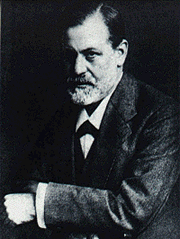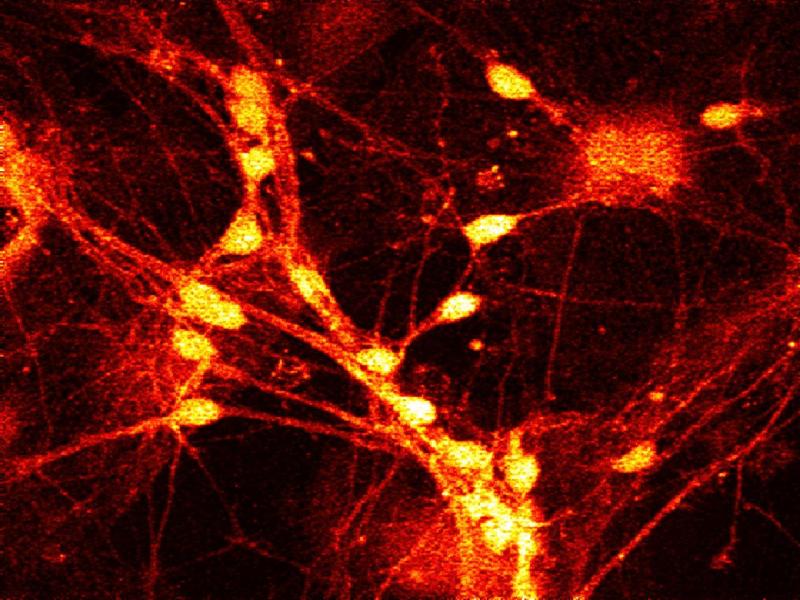|
Part 5: The World of Dreams Reexamined |
|||
|
Section 2: FREUDIAN DREAM THEORY |
|||
|
Men are only strong so long as they represent a strong idea. They become powerless when they oppose it |
|||
|
FREUD AND DREAMS |
|||
| The oldest comprehensive theory of dreams was formulated by Sigmund Freud (1856-1939), an Austrian neurologist. In order to understand Freud’s view of dreams lets briefly examine his ideas of how the nervous system is organized. | |||
|
NEURONS AT WORK |
|||
| Today, it is a known fact that two types of neurons are present in the nervous system - excitatory and inhibitory. Both types of neurons communicate through transmission of electrical signals. The neurons can either do so spontaneously or by receiving excitatory signals from other neurons. The difference is that excitatory neurons transmit signals, which cause increased activity in other neurons, while inhibitory neurons send signals, which decrease or inhibit the activity of other neurons. | |||
|
|||
|
FREUDIAN MISCONCEPTIONS: |
|||
| During Freud’s time, only process of excitation has been discovered while the process of inhibition was not even hypothesized. Drawing from the model of a completely excitatory system, Freud concluded that “nervous energy” (caused by excitation due to, say a, thought) could only be discharged by some sort ofa MOTOR action. An outcome of this theory is that once you got a notion in the brain, it would be passed around the nervous system until you decided to face it and do something about it, or until it found a way to manifest itself, either in an unintended action, such as the famous “Freudian slip,” or in form of visual imagery, such as a dream. | |||
| Today we know that the nervous system, which generates “blasts of energy”, could not exist since it would produce persistent, uncontrolled seizure activity! However, from the excitatory model of nervous system, Freud’s theory about the nature of dreams can logically follow. According to Freud, every dream has meaning and carries a message manifested by UNCONSCIOUS processes. The content of the dream is a metaphor for some disguised, or rather repressed, wish of the consciousness. | |||
|
FREUD ON MEANING OF DREAMS |
|||
| In order to interpret a dream, one has
to reason backwards in a process of interpretation known as “free association.”
For example, if a person dreamt of a key, Freud would ask what was the
first thing, which came to mind in connection with a key. A person would
likely answer that what came to mind is a lock. Freud would then reason
about the connection of the two and about the symbolism involved. He
would likely conclude that the “lock and key” imagery expressed the person’s
wish to have sex!
Freud thought that the function of dreams was to allow the release of repressed thoughts and impulses which cause excitation in neural activity. The force, which causes dreams to occur, was, in all cases, an unconscious and instinctual wish. The only way that the wish could be subdued is by the release of the “nervous energy” that was caused by it. Also, Freud noted that “though the number of symbols is large, the number of subjects symbolized is not large. In dreams those pertaining to sexual life are the overwhelming majority...They represent the most primitive ideas and interests imaginable.” Therefore, the same “dream symbol” meant that they both had the same repressed wish. |
|||
| Part of what made people skeptical about Freudian theories is this notion of universal dream symbolism. That is, if two people have the same visual imagery in a dream, is it the case that it has the same meaning? Some scientists dismiss the notion of meaning all together. In the next section, we will see what they have to say. After proper examination of the theory which dismisses meaning of dreams ( Section 3 ),I hope you will see that Freud (though he had some misconceptions about the physiology of the nervous system) was onto something after all ( Section 4 ) . | |||
| MORE LINKS ON DREAMS | |||
|
Dreaming: Function and Meaning
Freud: “Introductory lectures on psycho-analysis”
From Genomes to Dreams |
|||


